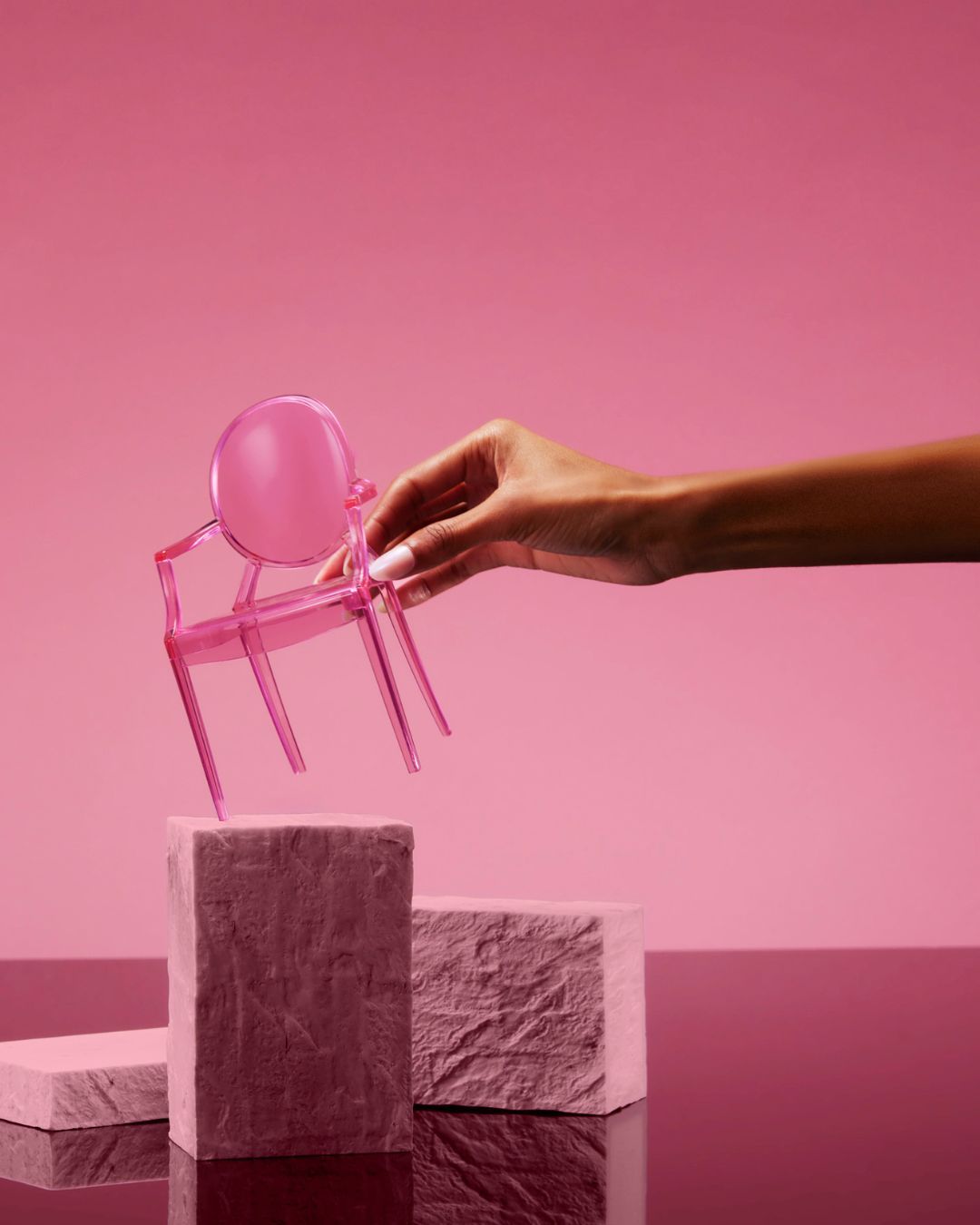
Barbie can be anything, even a designer Interview with Chris Down, who told us all about the collaboration between Mattel and Kartell
Mattel doesn't stop. After venturing into cinema (needless to say, we're talking about the Barbie movie, directed by Greta Gerwig, which made headlines all summer and beyond), now it's also entering design. Specifically, a collaboration with Kartell, producing a series of toy chairs that replicate the brand's iconic models (AI, Venice, Louis Ghost, Masters, Ero/s) but in Barbie pink, to seat our favorite dolls in style and make them beautiful collectibles. The latest collaboration in a long, indeed very long series. Worth mentioning are collaborations with Murakami, Shantell Martin, Off White, and Hot Wheels. We had a chat with Chris Down, Chief Design Officer of Mattel, on the occasion of Design Week, which for a week colored Milan, making it more lively and stimulating than ever, full of insights and opportunities.
Barbie's Chair Becomes Kartell
"It's my first Design Week. It was very constructive being around other creatives, listening to them. In these occasions, design wasn't just part of the conversation; it was an important part of the conversation,” he told us. And Barbie joins this conversation alongside Kartell. How does the world's most beloved doll fit into this field? For Chris Down, the answer to this question lies in Barbie's very soul: "If we think about her origin, with founder Ruth Handler observing her daughter and the way she played with paper dolls, we understand that design has always been crucial for Barbie. A modern doll, born when there were only baby dolls and paper dolls, she created a new way of imagining, of thinking, inspiring for generations. Thanks to Barbie, a girl thought she could become an astronaut, a teacher, a political figure. There was a moment when Barbie opened doors to the present and the future. Barbie went from having 10 possibilities to having hundreds of thousands. That's why she still speaks to people, why the movie became a phenomenon. Because it started from a human, rich reality."
Making this fruitful encounter materially possible is Mattel Creations, a creative platform where products are conceived, created, and realized without limits but in limited edition. "Barbie has always been part of the design and fashion world. Bringing Mattel and the design world together has always made sense. Barbie isn't just the doll; it's also the world she lives in that builds the dream. Furniture has always played an important role in our character's life. Collaborating with Kartell was a natural choice," which, in Milan, also presented two adult-sized reproductions of the entire collection, with a limited series of Masters and Louis Ghost chairs available on kartell.com. "Behind Mattel Creation is a real laboratory of creative and innovative ideas that uses our brands and connects them with partners but also with artists. Usually, we work with big retailers. This time we decided to target a different consumer, adults who love design. The result is a toy for adults, collectible and high-end, blending Barbie's world with high-quality design. The aim is not mass market, quite the opposite, but it's not excluded that some products explode, becoming very popular." The result? A culturally relevant product that doesn't lose its toy soul, in the best sense of the term.
A Circle Closes: From Mattel to Design, Through Dolls
To the question of what the most important phase of the project is, the crucial one, Chris Down responds by picking up on this concept: "The first thing is to think about the end consumer. Wonder if the product is consumer-centric. We ask ourselves if it makes sense, what makes sense, for whom it makes sense. Then we wonder if it's playable, finally if it's culturally relevant, if it connects with the reality that surrounds us. Finally, we focus a lot on making it excellent. In this, Kartell was the most obvious choice." Then he reveals a surprising detail, which once again refers to furniture and design, proving that a connection has always existed, and it's very strong: "When the company started - in 1945, before Ruth Handler invented the doll in 1959 - it produced plastic frames and doll furniture. The scraps of photographic frames were used to build doll furniture. It's a circle that closes."

























































